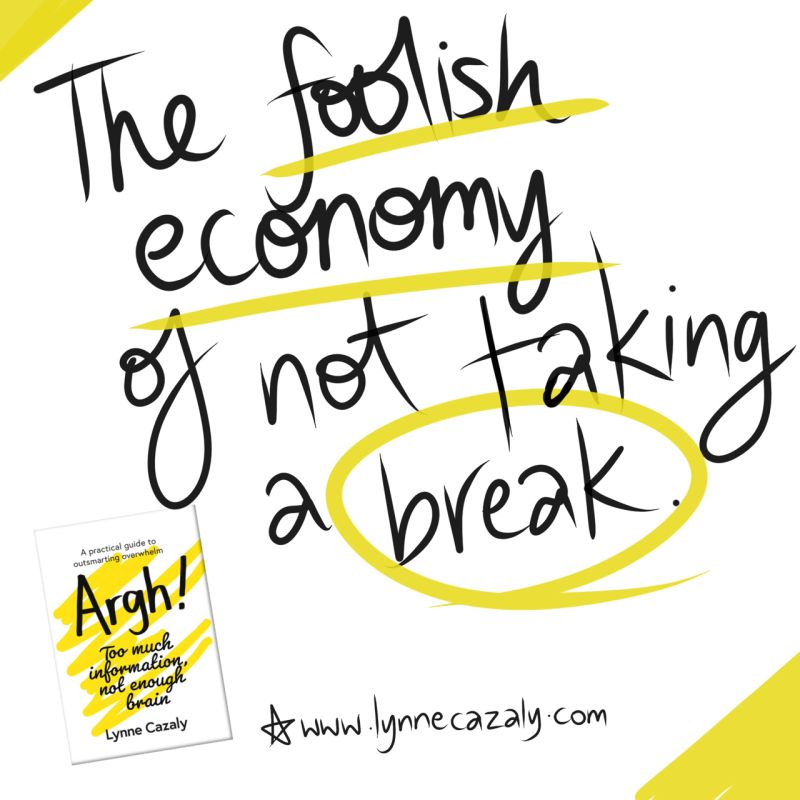The foolish economy of not taking a break
 Wednesday, October 13, 2021 at 4:51PM
Wednesday, October 13, 2021 at 4:51PM  “We don’t need a morning tea break, let’s keep working.”
“We don’t need a morning tea break, let’s keep working.”
“We will have a working lunch.“
“This is really important, so let’s keep going.”
There they are. The statements of overload and worry that ‘we won’t get through this’ so ‘we have to push on’.
As a participant and team member I’ve experienced leaders who won’t take a break.
And as a speaker and facilitator, I’ve had clients not want their team to take a break. I often have to fight for, advocate for or at worst, implore leaders to give people a break.
The science is well documented: We need breaks.
Not just to recover physically, but mentally ... to synthesise information, consolidate information and even ... go to the bathroom!
A lot of good stuff happens in the break from the talking, thinking, listening and pushing of information.
Connections, reflections and important thought processes are being executed. Brain actions that may not be possible during the intensity of the never-ending workshop or meeting need to happen, and a break is when it occurs.
To think we ‘can’t afford’ to take a break is foolish.
What are you worried will happen?
Disengagement? Loss of momentum? Slower progress? It’s already happened because there wasn’t a break.
At the least, break so people can empty their ‘cognitive load’ - the information they’re holding in their brain, and just like a truck we can’t carry more when it’s full. We must empty and ‘unload’ before we expect people to ‘reload’.
Breaks are mandated in fields like aviation, healthcare, transportation, building and construction ... even retail.
The consequences are disastrous when breaks are ignored or deemed less important than pushing on through.
🌕 Break during a meeting or workshop
🌕 Break between meetings and workshops
🌕 Break during intense and heavy work
🌕 And break for longer than you think.
You don’t need a complicated well-being program. Just take more breaks.

















